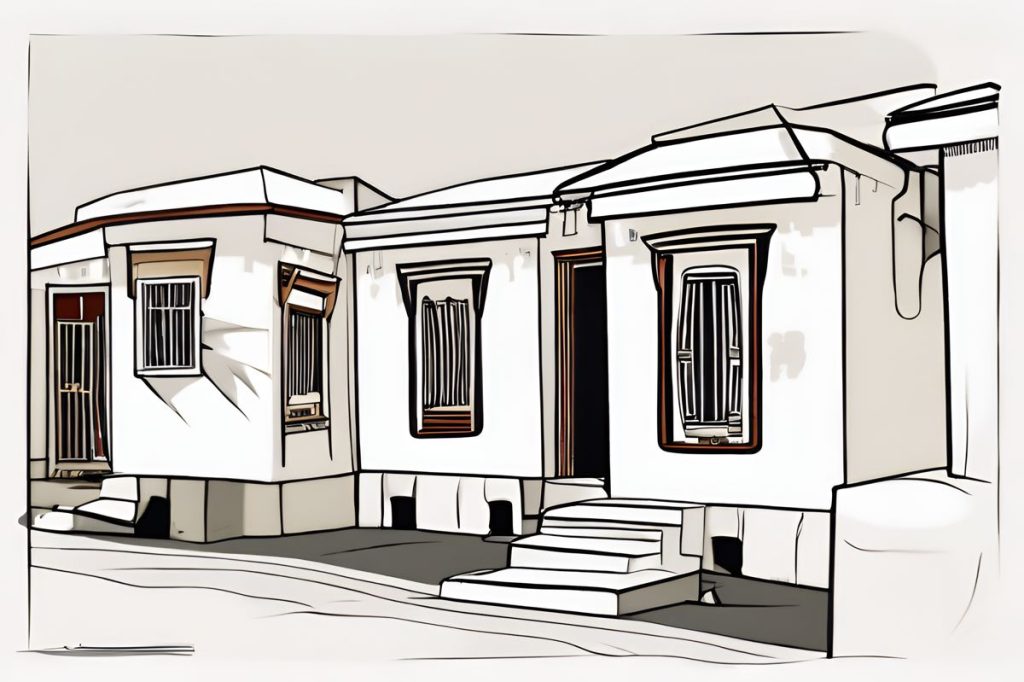The restoration of Turkish Cypriot homes on Larnaca’s Piale Pasha Street blends history and modernity, preserving cultural heritage for future generations. The project showcases the city’s commitment to honoring its multicultural past, enhancing the urban landscape with renewed facades that connect treasured tourist spots like Finikoudes and Mackenzie.
What is the significance of the restoration of Turkish Cypriot homes on Piale Pasha Street in Larnaca?
The restoration of Turkish Cypriot homes on Larnaca’s Piale Pasha Street is a testament to the city’s dedication to preserving its cultural heritage. By revitalizing the historical facades, Larnaca enhances the urban landscape, connects treasured tourist spots, and honors its multicultural history, ensuring that the city remains a dynamic blend of history and modernity for future generations.
A Fresh Façade for Larnaca’s Historical Homes
The coastal city of Larnaca has achieved a significant milestone in the preservation of its cultural heritage. After years of neglect, the historical Turkish Cypriot homes along the scenic Piale Pasha street have been restored to their former glory. This renovation project, spearheaded by the local municipality, has improved the aesthetics of the homes’ exteriors, breathing new life into the streetscape.
Piale Pasha street, a hub of activity with its steady flow of pedestrians and joggers, had long been waiting for attention. The initiative not only enhanced the façade of the old homes but also aimed to uplift the overall quality of life for Larnaca’s residents and visitors. The successful completion of the restoration works is an ode to the area’s rich past, showcasing the traditional architecture and preserving the narrative of the Turkish Cypriot quarter within the city.
Reviving Larnaca’s Architectural Heritage
The main objective behind this extensive restoration was to capture the essence of the buildings’ original designs. This ambition was rooted in a broader mission to highlight the architectural and historical significance of the Turkish Cypriot quarter. By restoring these structures, Larnaca has managed to salvage important physical testimonies of its multicultural history, which had been at risk of fading into obscurity.
With the project now complete, the revamped area stands proudly as a symbol of Larnaca’s commitment to heritage conservation. The renewed facades now serve as a welcoming vista for visitors arriving in Larnaca, acting as a visual bridge that connects the town’s most beloved tourist spots—Finikoudes and Mackenzie. This enhancement of the urban landscape not only pays homage to the past but also sets the stage for future generations to appreciate and learn about the city’s diverse cultural tapestry.
Larnaca: A Blend of History and Recreation
Larnaca, situated on the southern coast of Cyprus, is a city where history and leisure converge seamlessly. The recent restoration of the Turkish Cypriot homes is just one example of the city’s dedication to preserving its historical landmarks. Larnaca is home to several other significant sites, including the Church of Saint Lazarus, an impressive example of Byzantine architecture, and the ancient Kition, which offers insights into the city’s past dating back to the 13th century B.C.
The coastal promenade along Finikoudes Beach is another highlight, lined with palm trees and offering a vibrant atmosphere with its array of cafes and restaurants. For those looking to explore beyond the urban environment, the salt lake near the airport is a natural wonder, especially in winter when it welcomes flocks of pink flamingos.
Larnaca’s Continuous Cultural Journey
The restoration of these homes is not just a project completion; it’s the beginning of a new chapter in Larnaca’s story. As the city continues to develop, it maintains a respectful nod to its history, integrating it with the modern amenities and experiences it offers. This balance of old and new ensures that Larnaca remains a unique and dynamic destination on the island of Cyprus.
Larnaca’s example serves as an inspiration for cities worldwide, demonstrating how urban development and historical preservation can go hand in hand. As the facades of these Turkish Cypriot homes now stand restored, the spirit of the city’s ancestors is preserved, allowing Larnaca to continue writing its history with integrity and pride.
What is the significance of the restoration of Turkish Cypriot homes on Piale Pasha Street in Larnaca?
The restoration of Turkish Cypriot homes on Larnaca’s Piale Pasha Street is a testament to the city’s dedication to preserving its cultural heritage. By revitalizing the historical facades, Larnaca enhances the urban landscape, connects treasured tourist spots, and honors its multicultural history, ensuring that the city remains a dynamic blend of history and modernity for future generations.
How does the restoration project contribute to Larnaca’s architectural heritage?
The restoration project aimed to capture the essence of the buildings’ original designs, highlighting the architectural and historical significance of the Turkish Cypriot quarter. By restoring these structures, Larnaca managed to salvage important physical testimonies of its multicultural history, ensuring that future generations can appreciate the city’s diverse cultural tapestry.
What other significant sites can visitors explore in Larnaca?
In addition to the restored Turkish Cypriot homes on Piale Pasha Street, visitors to Larnaca can explore sites such as the Church of Saint Lazarus, an example of Byzantine architecture, and the ancient Kition, offering insights into the city’s past dating back to the 13th century B.C. The coastal promenade along Finikoudes Beach and the salt lake near the airport are also popular attractions in Larnaca.
How does Larnaca balance its historical past with modern development?
Larnaca continues to develop while maintaining a respectful nod to its history, integrating it with modern amenities and experiences. This balance of old and new ensures that Larnaca remains a unique and dynamic destination on the island of Cyprus. The city’s example serves as inspiration for other cities worldwide, demonstrating how urban development and historical preservation can coexist harmoniously.

